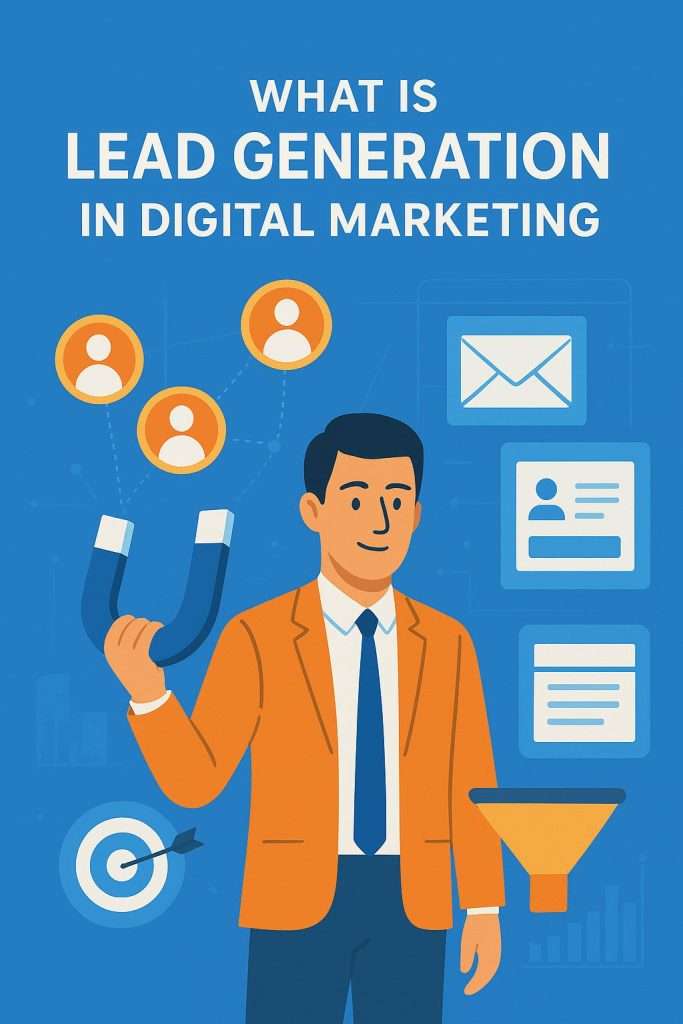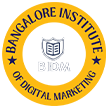
Lead generation is a fundamental concept in digital marketing that helps businesses attract potential customers and convert them into paying clients. In simple terms, lead generation refers to the process of identifying and cultivating individuals who have shown interest in your product or service. In today’s highly competitive online market, effective lead generation strategies can make the difference between business growth and stagnation.
Table of Contents
Understanding What are Leads and What is Lead Generation in Digital Marketing
A lead is essentially a person or organization that has expressed interest in your offerings. In digital marketing, leads are usually captured through various online channels such as social media, websites, email campaigns, and paid advertisements. Lead generation is the strategy and process of converting these interested prospects into actionable sales opportunities.
The importance of lead generation cannot be overstated. Businesses that generate high-quality leads are more likely to increase their sales, build strong customer relationships, and achieve long-term growth. Lead generation not only increases revenue but also helps in optimizing marketing spend by focusing efforts on prospects most likely to convert.
Types of Leads in Digital Marketing

Understanding the types of leads can help businesses tailor their marketing strategies effectively:
Marketing Qualified Leads (MQLs): These are leads that have engaged with marketing content, such as downloading an e-book or subscribing to a newsletter, and are more likely to become customers.
Sales Qualified Leads (SQLs): SQLs have shown a higher level of interest and are considered ready for direct sales outreach. These leads often have a clear intent to purchase.
Cold Leads: Individuals who have not shown significant interest yet but may convert over time with nurturing campaigns.
Hot Leads: Prospects who are ready to make a purchase decision in the near future.
Understanding these distinctions helps digital marketers segment their audience and develop personalized campaigns that enhance conversion rates.
The Importance of Lead Generation in Digital Marketing
Lead generation plays a crucial role in the success of any digital marketing strategy. Some of the key reasons why lead generation is important include:
- Revenue Growth: More leads translate to more opportunities for sales and revenue growth.
- Targeted Marketing: Helps businesses focus on high-potential prospects rather than a broad, unfocused audience.
- Cost Efficiency: Efficient lead generation reduces wasted marketing spend by targeting only those who are likely to convert.
- Business Insights: Capturing lead data provides valuable insights into customer behavior, preferences, and demographics.
- Relationship Building: Engaging leads through personalized communication fosters trust and long-term customer relationships.
Key Components of Lead Generation
Successful lead generation campaigns rely on several key components:
Landing Pages: Landing pages are designed to capture lead information in exchange for a valuable offer, such as a free guide or discount code.
Calls-to-Action (CTAs): A strong CTA encourages prospects to take the next step, such as filling out a form or subscribing to a newsletter.
Forms: Forms are used to collect contact information from leads. Simpler forms often result in higher conversion rates.
Lead Magnets: These are valuable resources offered to prospects in exchange for their contact information, like e-books, templates, or webinars.
Email Marketing: Follow-up emails nurture leads and guide them through the buyer’s journey.
Lead Generation Strategies in Digital Marketing
Digital marketing offers a variety of lead generation strategies. Choosing the right combination of tactics depends on your business type, target audience, and goals.
Content Marketing
Content marketing is one of the most effective lead generation strategies. By providing valuable content, businesses attract potential customers and encourage them to engage. Examples include:
- Blog posts that answer customer questions
- E-books and guides
- Case studies
- Infographics and videos
High-quality content not only generates leads but also positions your business as an authority in your niche.
Search Engine Optimization (SEO)
SEO helps businesses attract organic traffic from search engines. Optimizing website content for relevant keywords ensures your brand appears in front of people actively searching for solutions related to your offerings. Techniques include:
- Keyword research
- On-page optimization
- Link building
- Technical SEO improvements
When combined with landing pages and lead capture forms, SEO can be a powerful lead generation tool.
Social Media Marketing
Social media platforms like Facebook, LinkedIn, Instagram, and Twitter provide excellent opportunities to generate leads. Businesses can use social media to:
- Share valuable content
- Run paid advertisements targeting specific demographics
- Engage with followers through comments, messages, and polls
- Host live events and webinars
LinkedIn, in particular, is highly effective for B2B lead generation due to its professional user base.
Paid Advertising
Paid advertising, such as Google Ads or social media ads, allows businesses to target specific audiences with lead generation campaigns. Paid campaigns can include:
- Search ads targeting high-intent keywords
- Display ads on relevant websites
- Retargeting campaigns to re-engage previous visitors
Paid advertising provides immediate visibility and can drive high-quality leads when optimized correctly.
Email Marketing
Email marketing is a vital tool for nurturing leads and converting them into customers. By sending targeted and personalized messages, businesses can:
- Educate leads about products or services
- Share exclusive offers and promotions
- Build long-term relationships with prospects
Email campaigns often use automation tools to deliver timely and relevant content to leads.
Webinars and Live Events
Hosting webinars or live online events is an effective way to generate high-quality leads. Attendees provide their contact information in exchange for valuable insights or training. Webinars also allow businesses to interact with leads directly, answer questions, and showcase expertise.
Influencer Marketing
Collaborating with influencers in your niche can expand your reach and generate leads. Influencers promote your offerings to their audience, creating trust and credibility. This strategy works well for B2C businesses in industries like fashion, lifestyle, and technology.
The Lead Generation Funnel
The lead generation process is often visualized as a funnel, guiding prospects from awareness to conversion. Understanding the funnel helps marketers optimize each stage for maximum results:
- Awareness Stage: Potential customers discover your brand through content, social media, or ads.
- Interest Stage: Prospects engage with your content, exploring products or services.
- Consideration Stage: Leads evaluate your offerings and compare them with competitors.
- Decision Stage: Leads are ready to make a purchase or take a specific action.
- Retention Stage: After conversion, nurturing continues to ensure customer satisfaction and loyalty.
Optimizing each stage of the funnel ensures higher lead quality and better conversion rates.
Lead Nurturing Techniques
Lead nurturing is essential to convert prospects into customers. Strategies include:
- Personalized email campaigns
- Retargeting ads for previous website visitors
- Offering relevant content based on lead behavior
- Engaging through social media interactions
- Providing exclusive offers or promotions
Effective nurturing builds trust and guides leads seamlessly through the buyer’s journey.
Measuring Lead Generation Success
Tracking and analyzing lead generation efforts is critical for continuous improvement. Key metrics to monitor include:
- Conversion Rate: Percentage of visitors who become leads
- Cost per Lead (CPL): Average cost of acquiring a lead through marketing efforts
- Lead Quality: Assessing whether leads are likely to convert into paying customers
- Return on Investment (ROI): Evaluating the profitability of lead generation campaigns
- Engagement Metrics: Tracking email open rates, click-through rates, and website interactions
By measuring these metrics, businesses can refine strategies to maximize efficiency and results.
Common Challenges in Lead Generation
Despite its importance, lead generation comes with challenges, including:
- Attracting high-quality leads in competitive markets
- Balancing quantity and quality of leads
- Keeping up with changing digital marketing trends
- Nurturing leads effectively to avoid drop-offs
- Integrating lead generation tools with existing systems
Addressing these challenges requires a combination of strategic planning, technology, and ongoing analysis.
Tools for Lead Generation
Modern businesses use various tools to streamline lead generation:
- Customer Relationship Management (CRM) Systems: Track and manage leads efficiently
- Marketing Automation Platforms: Automate email campaigns and lead nurturing
- Landing Page Builders: Create optimized pages for capturing leads
- Analytics Tools: Measure campaign performance and ROI
- Social Media Management Tools: Schedule posts and monitor engagement
Using the right tools can significantly improve the efficiency and effectiveness of lead generation efforts.
Trends in Lead Generation
Lead generation is constantly evolving. Key trends shaping the future include:
- Artificial Intelligence (AI): AI-powered tools can predict lead behavior and optimize campaigns.
- Personalization: Customized content and offers increase engagement and conversion rates.
- Interactive Content: Quizzes, polls, and surveys engage leads more effectively than static content.
- Video Marketing: Videos are increasingly used for education, engagement, and lead capture.
- Omnichannel Strategies: Integrating multiple platforms ensures consistent messaging and better lead nurturing.
Staying updated with these trends is essential for businesses to maintain a competitive edge.
Best Practices for Effective Lead Generation
To maximize lead generation success, businesses should follow best practices:
- Understand your target audience thoroughly
- Use multiple channels to reach prospects
- Offer valuable resources in exchange for lead information
- Optimize landing pages for higher conversion
- Nurture leads through personalized communication
- Regularly analyze metrics and refine strategies
- Ensure compliance with data privacy regulations
Implementing these practices improves lead quality, conversion rates, and overall marketing ROI.
B2B vs B2C Lead Generation
Lead generation strategies differ for B2B and B2C businesses:
B2B Lead Generation: Focuses on generating leads for complex, high-value products or services. Strategies often include LinkedIn outreach, webinars, whitepapers, and account-based marketing.
B2C Lead Generation: Targets individual consumers with shorter sales cycles. Strategies include social media ads, influencer marketing, contests, and discount offers.
Understanding the differences helps businesses create tailored approaches for maximum impact.
Case Studies: Successful Lead Generation Campaigns
Several companies have successfully implemented lead generation campaigns:
- A software company increased leads by offering free trial software and capturing email addresses for follow-up campaigns.
- An e-commerce brand used Instagram ads with exclusive discounts to attract and convert new customers.
- A B2B consulting firm hosted webinars and shared case studies, generating high-quality leads for their sales team.
These examples demonstrate the effectiveness of targeted, value-driven lead generation strategies.
The Future of Lead Generation
The future of lead generation is digital, data-driven, and personalized. Businesses will increasingly rely on AI, machine learning, and predictive analytics to identify prospects and optimize campaigns. Omnichannel strategies will dominate, providing seamless experiences across websites, social media, email, and mobile apps.
As competition grows, businesses that invest in innovative lead generation techniques and focus on building trust with prospects will gain a significant advantage.
Conclusion
Lead generation in digital marketing is the lifeblood of business growth. By understanding what leads are, implementing effective strategies, nurturing prospects, and measuring results, businesses can generate high-quality leads that drive sales and long-term success.
With the right combination of content marketing, SEO, social media, paid advertising, and personalization, lead generation becomes a powerful tool that not only increases revenue but also strengthens brand reputation and customer loyalty.
The digital landscape will continue to evolve, but businesses that prioritize lead generation, adapt to trends, and focus on providing value to prospects will always stay ahead in the competitive marketplace.



